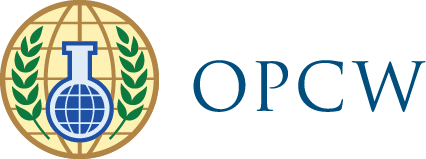THE HAGUE, Netherlands—21 November 2023—The Scientific Advisory Board (SAB) of the Organisation for the Prohibition of Chemical Weapons (OPCW) endorsed a report outlining key recommendations on biotoxin analysis and investigations of their alleged use as weapons submitted by a SAB Temporary Working Group (TWG) earlier this year.
Biotoxins are toxic chemicals produced by living organisms, which vary widely in properties such as structure, size, and mechanisms of toxicity. Some biotoxins can be more toxic than traditional nerve agents. There are two biotoxins subject to stringent verification measures under the Chemical Weapons Convention – ricin and saxitoxin – with many others also posing safety and security concerns.
The risk of misuse of biotoxins as weapons requires the OPCW to be prepared to conduct various investigations and missions related to their alleged use. To ensure the Organisation’s readiness to do so, the TWG’s report makes critical recommendations to the OPCW, including:
A certification regime should be established for laboratories according to their capabilities in biotoxin analysis
A major challenge related to the analysis of biotoxins is their diversity. Laboratories around the world use different methods and technologies for the detection of toxins, and few laboratories are skilled in the analysis of both high molecular weight (HMW) biotoxins, such as ricin, and low molecular weight (LMW) biotoxins, such as saxitoxin. HMW biotoxins are more complex and require sophisticated analysis techniques. The TWG report concludes that laboratories should be certified to analyse either high or low molecular weight biotoxins, and potentially even specific families of biotoxins, according to their area of expertise to ensure the integrity of the examination results.
The OPCW should cooperate with other international organisations and laboratories around the world to develop capabilities for investigating alleged use of biotoxins
The TWG report identifies nine biotoxins – both LMW and HMW – which are most likely to be used as weapons and most relevant for an investigation of alleged use. Scientific experts identified these chemicals based on criteria such as historical use, availability, toxicity, and stability. Given their diversity, different expertise is needed to analyse each.
The TWG report recommends that the OPCW work together with laboratories beyond the OPCW designated laboratories network, for example, laboratories listed in the roster under the United Nations Secretary-General’s Mechanism for Investigation of Alleged Use of Chemical and Biological Weapons. Collaboration with other international organisations, such as the United Nations, and laboratories around the globe is needed to build international capabilities for the forensic analysis of biotoxins, including developing common guidelines and best practices to be used in international investigations. A strengthened partnership would improve efficiency by minimising gaps and duplication, the report concludes.
The OPCW should adopt a comprehensive forensic approach to every investigation
Each investigation of alleged use of biotoxins as weapons could present unique circumstances, which should be addressed by the OPCW during an investigation. A comprehensive forensic analysis should consider factors such as the nature of the release (naturally occurring or deliberate release), production methods, and sample provenance or batch matching via a comprehensive molecular analysis of the sample.
The recommendations of the TWG on Analysis of Biotoxins were endorsed by the SAB and subsequently accepted by the OPCW Director-General. The group’s work will help ensure the OPCW remains fully capable to investigate any alleged misuse of a biotoxin should it be called upon to do so.
Currently, taking into account the TWG’s recommendations, the OPCW is moving forward with both establishing a new proficiency test focused on saxitoxin as well as strengthening its collaboration with the UNSGM and its network of laboratories. This work is funded by the United Kingdom via The Global Partnership Against the Spread of Weapons and Materials of Mass Destruction.
Background
The SAB TWG on the Analysis of Biotoxins was established by the OPCW Director-General in January 2021, implementing one of the recommendations from the previous TWG on Investigative Science and Technology. The Director-General requested that the new TWG review the science and technology relevant to the analysis of biotoxins and considerations that need to be taken into account in investigations of their alleged use.
The TWG on the Analysis of Biotoxins started work in March 2021 and convened seven times during its two-year mandate. The Group comprised 16 experts, many of whom are current or former SAB members, with a broad and complementary range of expertise relating to the analysis of biotoxins. This expertise was further augmented by a total of 19 briefings from experts invited as guest speakers to the TWG meetings. To guide the TWG’s review, the Director-General posed a series of questions, and these were addressed by the five subgroups. The TWG’s end of mandate report provides an in-depth review of the important considerations in the analysis of biotoxins and sets out a total of 23 recommendations. Of these, nine have been marked as “strong” recommendations as the TWG considers that they warrant prioritised consideration.
The OPCW designated laboratories are a network of laboratories in Member States certified by the Organisation to perform off-site analysis of environmental and biomedical samples.
As the implementing body for the Chemical Weapons Convention, the OPCW, with its 193 Member States, oversees the global endeavour to permanently eliminate chemical weapons. Since the Convention’s entry into force in 1997, it is the most successful disarmament treaty eliminating an entire class of weapons of mass destruction.
On 7 July 2023, the OPCW verified that all chemical weapons stockpiles declared by the 193 States Parties to the Chemical Weapons Convention since 1997 — totalling 72,304 metric tonnes of chemical agents — have been irreversibly destroyed under the OPCW’s strict verification regime.
For its extensive efforts in eliminating chemical weapons, the OPCW received the 2013 Nobel Peace Prize.
